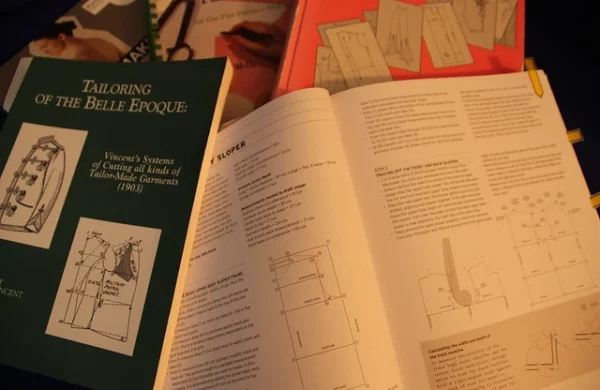
When creating a new vestment pattern. The first rule: make the pattern so that if I were purchasing, the pattern could be opened, and reviewed, and after understanding the instructions and layout, the pattern were ready to use.
Like this:
Like Loading...

Creating church vestment patterns involves careful drafting, adjusting for style and fit, and attention to detail. The process includes making a master pattern, modifying it, and fine-tuning for the desired result. The Rochet and Monastic Choir Alb patterns are in progress, with multiple sizes planned.
Like this:
Like Loading...

This little book (founded on a series of articles on Church Embroidery written for the ‘Treasury’) is intended for the use of those who are desirous of learning by practical experiment how to make the best use of such time and skill as they have at their command; and who, while they are unable to go through the long courses of instruction which are generally indispensable to the attainment of perfection are yet anxious to devote their ‘labour of love’ to the service of the Church. – Hinda Hands (Hands, 1907, p. 1)
Like this:
Like Loading...
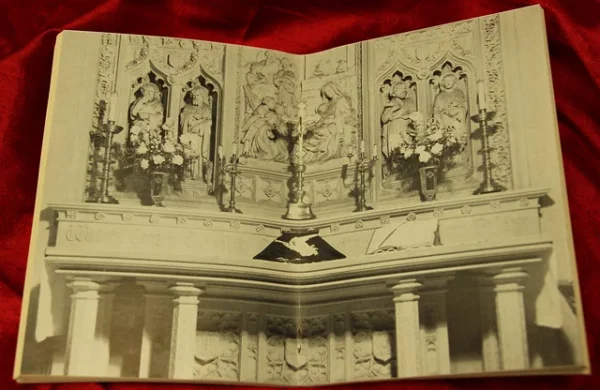
The name of Lucy Vaughn Hayden Mackrille is well known by many involved in Ecclesiastical Sewing and the making of church vestments as the founder of the Washington Cathedral Altar Guild. Her book entitled Church Embroidery and Church Vestments is a valuable resource for seamstresses, providing detailed instructions for making many vestments.
Like this:
Like Loading...

Ninian Comper, also known as John Ninian Comper, embarked on his design career in 1880 at age 16 in Aberdeen School of Art. After joining Charles Kempe’s studio in 1882, he honed his skills. Comper’s apprenticeship with George Frederick Bodley in 1883 marked a significant phase in his development as a church architect. This dedicated training for four years under Bodley and Thomas Garner shaped Comper into a skilled practitioner beyond a mere craftsman.
Like this:
Like Loading...
Season Changes The seasons are changing, and there is no doubt about it. The days are still sunny and warm while the evenings have a bit of a chill. There has even been a hint of frost in the air and on the ground this week in Northern Minnesota. Seasonal changes are not the only new events occurring in and around the Ecclesiastical Sewing workroom. Soon there will be a brand new format for Ecclesiastical Sewing along with a new website storefront. The changes are slow, and it takes… Read more Season Changes →
Like this:
Like Loading...
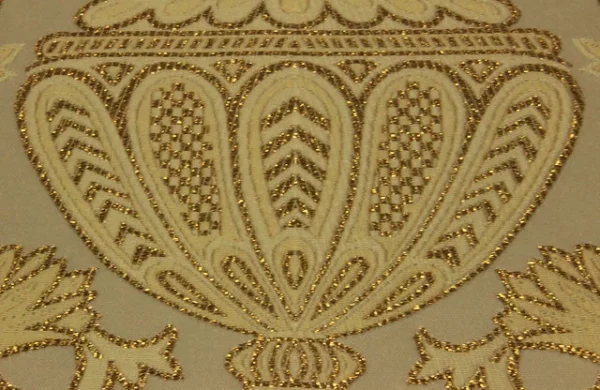
Venezia is a lovely name for a liturgical fabric. It conjures up thoughts of foreign lands with such a name, and so it should. Venezia’s name is tied to the Venetian artisans of long ago. The 15th-century Venetian artisans, who drew much of their design influence from the ancient Romans, developed a taste for reproducing many of the classical architectural features from that era. Those features include the use of graceful lines, the classical form of the pottery or jar, in the jardiniere, as well as other design elements such as the birds, plants, and scroll work.
Like this:
Like Loading...

Linen is an amazing fiber, which results in a unique fabric, perfectly suitable for use in the making of altar linens and church linens.
Like this:
Like Loading...
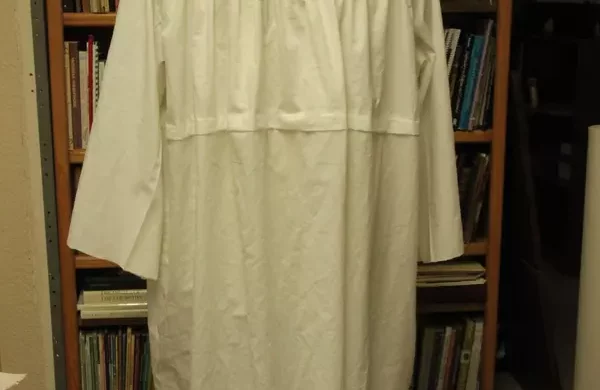
There is a new man in the Ecclesiastical Sewing workroom of late. He is on duty, 24/7, never leaving his post. He never complains, or tires of his duty. He responds to my beck and call. He stands to guard over my vintage liturgical sewing library, keeping harm and danger at bay. He has been hanging around for several months now, not doing much of anything…..sometimes he is in the way and gets shoved or pushed, but he takes it in stride. He is tall and well-built. But sometimes, he gets a bit down. Let’s meet Martin the Steadfas
Like this:
Like Loading...
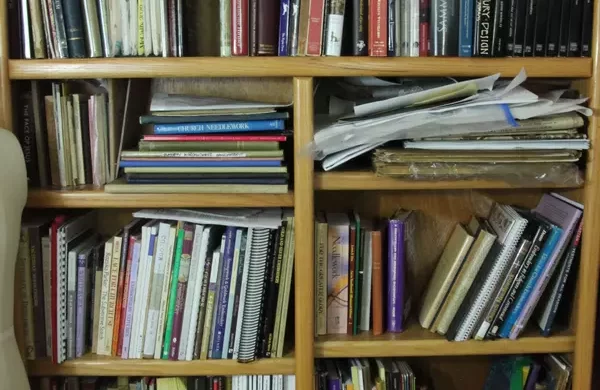
Vintage Liturgical Embroidery Library Vintage Liturgical Embroidery Library: The Ecclesiastical Sewing workroom is getting a bit of a workout these days. Things are moving and shuffling around, getting ready… Read more Vintage Liturgical Embroidery Library →
Like this:
Like Loading...
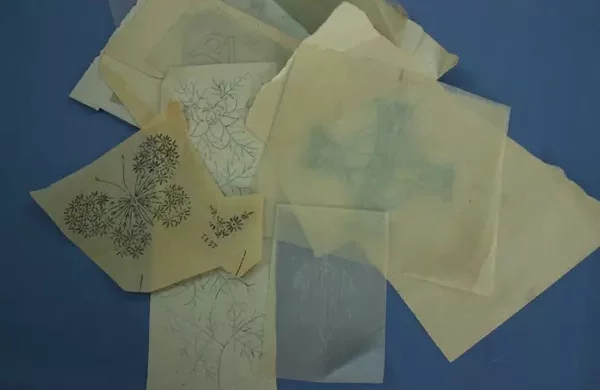
A collection of historic designs on aged paper dating from the 1870s to around 1940 and beyond. The collection includes original works by renowned designers from the Gothic age spanning the last two centuries, including perforated designs and transfers sourced from an antique Thomas Brown and Sons catalog. The designs are currently undergoing verification after a thorough historical tracing. It’s important to document and preserve this collection for future generations as a valuable resource for study and learning.
Like this:
Like Loading...

Liturgical Arts Resources link artists for inspiration. The Lutheran Art Resources site values quality in church aesthetics, focusing on unique paraments and vestments. Despite limited resources, various options exist for obtaining high-quality liturgical art. Scapegoat Studio Blog’s logos and Ad Crucem’s vibrant paintings, including Edward Riojas’s, add richness to this artistic community.
Like this:
Like Loading...
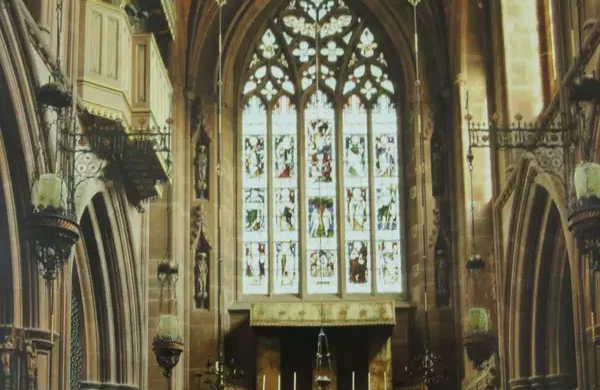
This book is about George Frederick Bodley’s life and work, along with other influential figures like John D. Sedding and A.W.N. Pugin. It covers various schools and methodologies, showcasing famous works. The book also explores how these visionaries collaborated with artisans in creating church artworks. With over five hundred pages, it’s a detailed journey into the design process of churches and their furnishings.
Like this:
Like Loading...
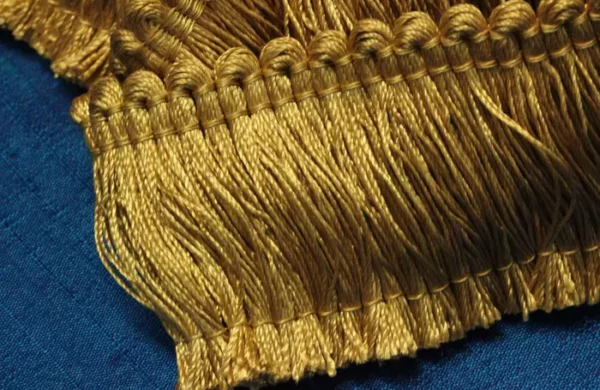
The fringe is a group of yarn, bundled together and held in place with several rows of stitching at the top edge. The lower edge has a chain stitch which holds all of the cut ends in place until the fringe is applied.
Like this:
Like Loading...

Handmade booklet with tracings and designs for hand embroidery on church linens. It includes a cross-with-crowns pattern and larger sheets with iron-on transfers for clear designs. The book also has traced hand embroidery designs and possible pricing info for different linen sizes.
Like this:
Like Loading...















You must be logged in to post a comment.